The National Electric Power Regulatory Authority (Nepra), the power regulatory authority in Pakistan, admits that a tremendous increase in electricity prices due to inflation has impacted every sector, including domestic consumers, industry and agriculture. It has devastated a common man’s life.
The power crisis in the country has deepened since the last two decades. There was a shortfall of around 4,000MW this year despite a 22pc drop in electricity demand as of May compared to the previous year while the situation gets worse in months of June and July.
In 2006, with the support of international organisations, a plan was made to buy electricity from Central Asian countries where Kyrgyzstan and Tajikistan produce abundant hydroelectricity in summers.
The CASA-1000 project
The initial negotiations to buy electricity from Central Asia started in Islamabad in 2006. The four countries signed an agreement the same year in Dushanbe, which was called the Central Asia South Asia project, commonly known as the 'CASA-1000'.
The feasibility report of CASA-1000 was prepared in 2011, but the World Bank approved this project in March 2014 with financial support of $1.02bn from its International Development Association. It includes the Islamic Development Bank, the European Bank of Reconstruction and Development, the European Bank of Investment, USAID (United States Agency for International Development), and other international financial institutions.
Pakistan, Afghanistan, Kyrgyzstan, and Tajikistan signed another memorandum of understanding (MoU) for this project in 2016, named 'Development of Central Asia-South Asia Regional Electricity Market (CASEREM)’.
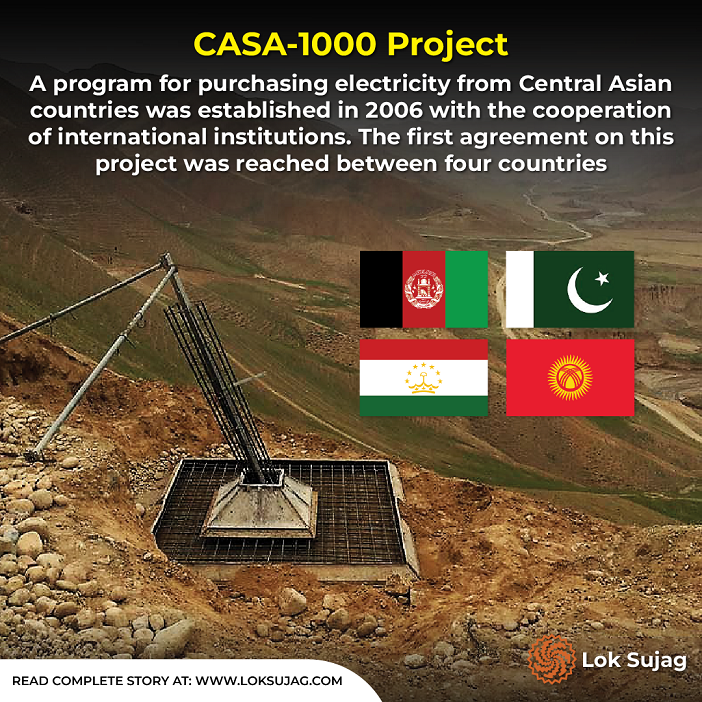
According to the official website of CASA-1000, they are laying a 1,387km long high transmission line from Kyrgyzstan and Tajikistan. It will have 4,264 towers (poles) out of which 1,243 will be installed in Kyrgyzstan. This transmission line will supply 1,300MW of clean energy (hydropower) from Central Asia, including 300MW to Afghanistan and 1,000MW to Pakistan. In Pakistan, they will connect the CASA transmission line to the Nowshera grid.
The main objectives of the project included the economic development of the four participating countries, integrating trade markets, increasing the Central Asian countries income from clean energy and alleviating power shortages in South Asian countries.
According to the timeline, the work on the project started in 2018 and it was supposed to be completed in 2023. However, the work was stopped in Afghanistan in 2021. Kyrgyzstan completed 77pc of the work by that time while Tajikistan, Pakistan, and Afghanistan finished 88, 51 and 18 percent of work, respectively.
However, the new deadline of the project could not be officially announced.
Pakistan Community Support Project (CASA-1000)
The CASA project includes a Community Support Project (CSP) for all four partner countries to ensure public support for the main project and the investment benefits to the population residing near the transmission line.
Under the Pakistan Community Support Project (PCSP), development work has been done in a 113km long transmission line corridor from Torkham to Nowshera where 462 towers will be installed.
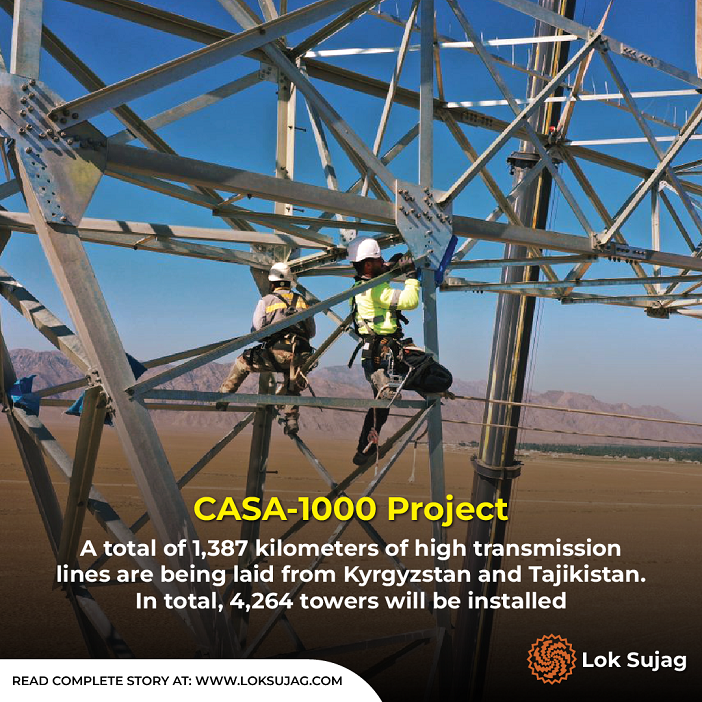
According to CASA’s website, 17 health and education schemes have been implemented in the Khyber, Peshawar and Nowshera areas of the corridor, including the rehabilitation of eight girls primary schools and nine basic health centres.
“Other community development schemes include 166 small projects such as drinking water supply, irrigation tube wells, farm-to-market roads, lining of watercourses, paving of streets with drainage.”
To monitor these schemes, the Community Support Program Councils were formed in the respective areas, each headed by local people.
Project’s positive impact on local population
Shah Alam is working as a social welfare and development expert in the PCSP. He told Lok Sujag that they have provided solar power facilities for schools and irrigation tube wells to the people living within two kilometres of the transmission line.
“It also includes the building plans of women skill centres, technical training centres for youth and community halls. It is benefitting more than 500,000 people in these districts.”
Alam says the programme kept $10.5m in the multi-donor fund of Khyber Pakhtunkhwa and Balochistan for these projects, while it allocated $2m from the ‘CASA Multi-Donor Trust Fund’ for training community councils and other activities.
Gul Muhammad, a farmer of Sheikhan village in Jalozai Union Council of Nowshera district, is very happy with the CASA project. He says the development programme has irrigated his agricultural land, which was barren for years. Hence, potato cultivation on the land benefitted him to a large extent.
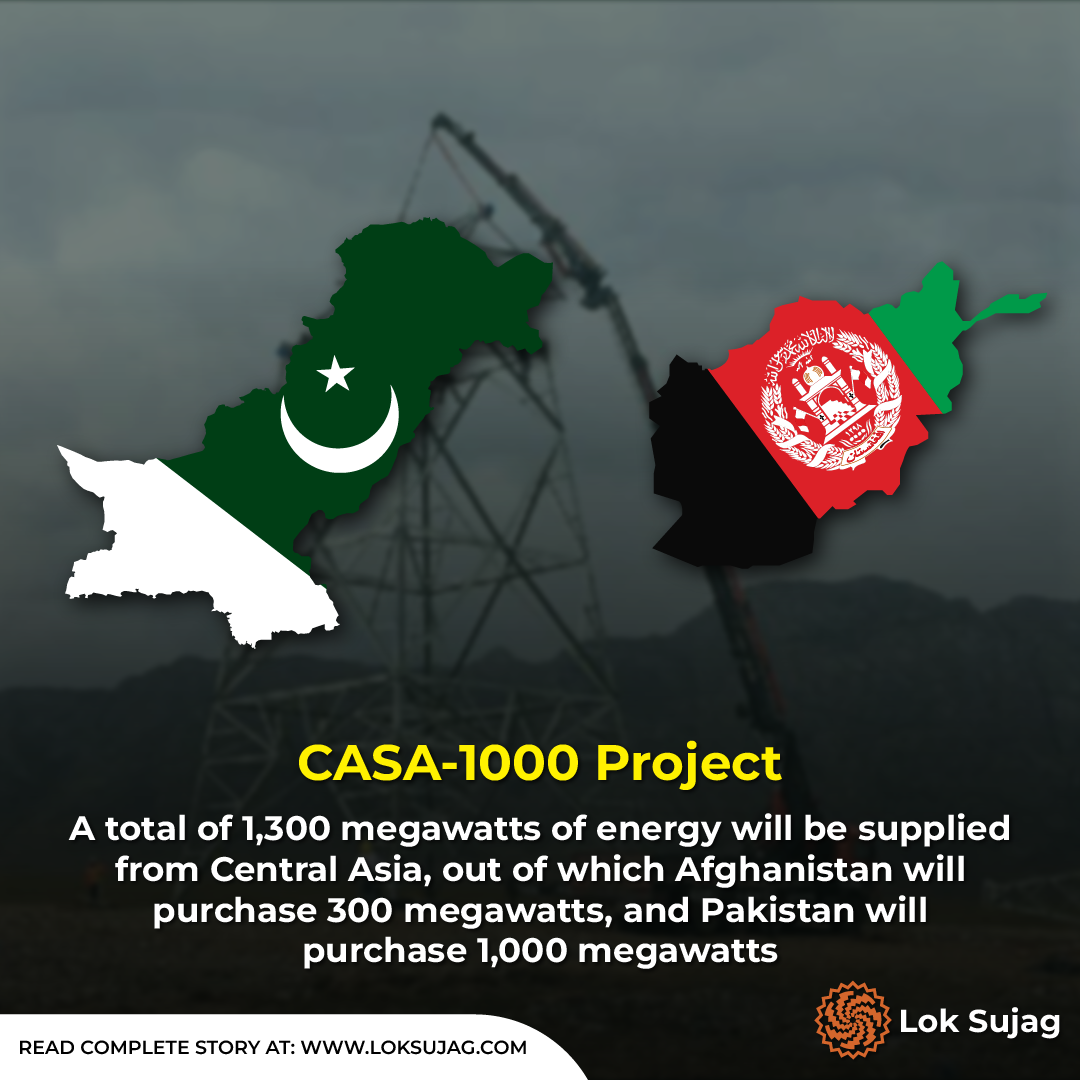
“Our village is close to the supply line of CASA-1000 where not only PCSP installed 500 feet-deep tube wells but also converted 36 tube wells to solar energy, rehabilitating 30 acres of land here.”
Syed Mir Afridi, a resident of Landi Kotal tehsil of Khyber district, was a member of the Local Development Council. He says that to protect his village from floods, the community support project built protective embankments on the storm drains, paved the streets and provided clean drinking water.
However, no development schemes were provided in some villages, including Pasad Khel in Landi Kotal, and around $4m allocated for these public schemes could not be spent.
The PCSP officials confirm that 25 villages have been identified where development work was not possible due to the expiry of the stipulated period.
Payment of compensation for lands and public grievances
Village-level committees were also formed to monitor compensation for land acquired for installing the transmission line. Shakir Khan Afridi headed a similar committee of village Nek Khel in Landi Kotal.
He says five marla land was required for each transmission tower and the owners were paid Rs120,000 through cheques while several tribal members received money for the towers to be installed on the hills.
Akhtar Ali Shah, a resident of the Jalozai area of Nowshera, says that due to the installation of seven electricity towers in the village, some people have lost their entire property while only a few of them got paid while others are forced to visit the office now and then.
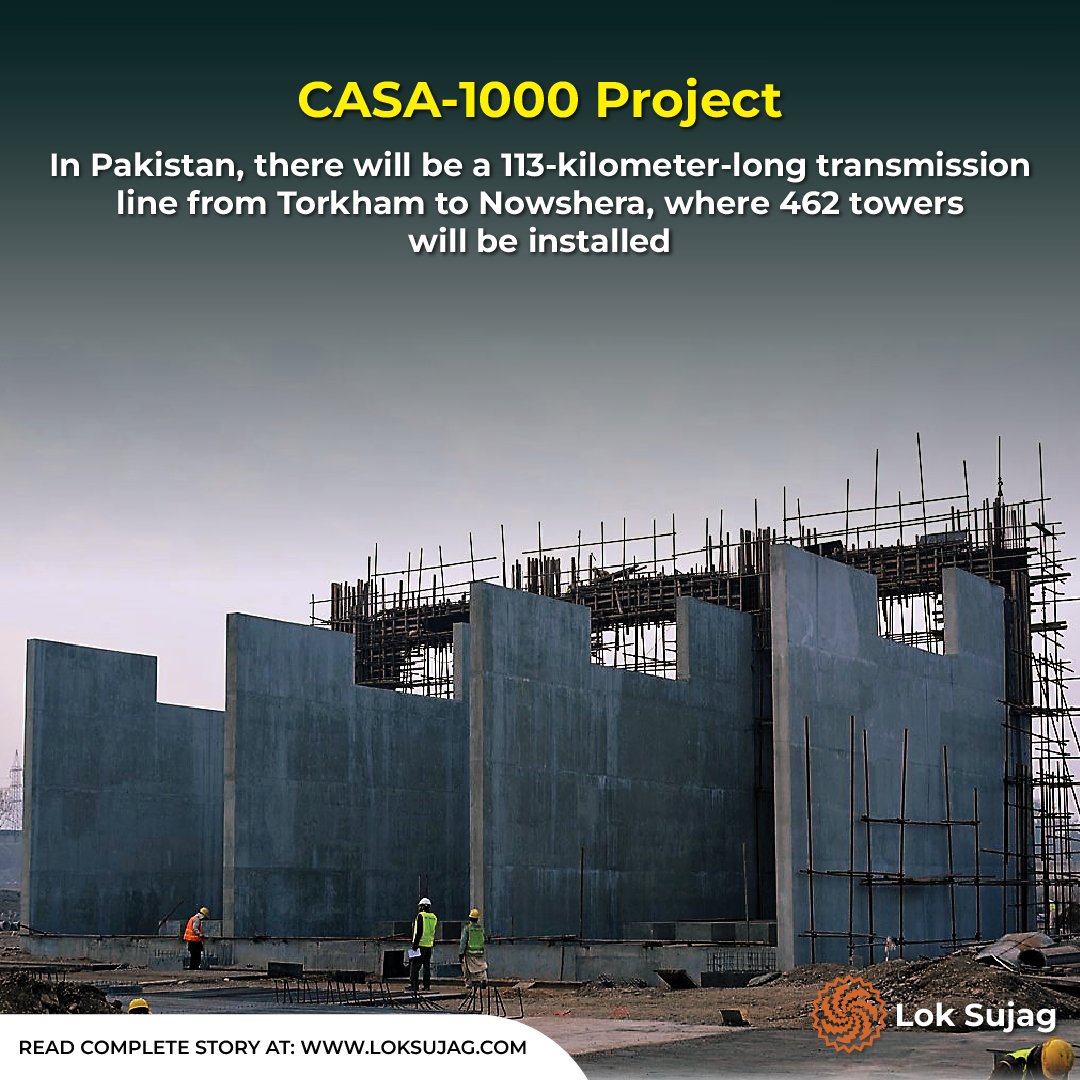
“The government should better compensate the affected people so that they can buy alternative land for their house or farming.”
The National Transmission and Dispatch Company Limited (NTDC) has been tasked with the installation of the CASA transmission lines in Pakistan and it also prepared the Environmental and Social Assessment Report.
The report states that 257 families will be affected by the CASA project, out of which 51 families will lose their land of about 63 acres permanently while 195 families will lose their crops and land value during the installation of towers on about 111 acres. It will impact the barren land/pasture of 11 households.
According to the NTDC, land would be acquired from private owners under the Khyber Pakhtunkhwa Land Acquisition (Amendment) Act, compensation for the loss of house and crop would be paid while there would be support allowance for loss of land value.
Thus, the total amount for compensation is about Rs39.2m.
However, the details of the people who receive the payment are not clear yet.
The NTDC sources claim successful installation of 376 out of 462 towers in Pakistan whereas work on eight towers in Landi Kotal is still under-construction due to some issues.
Also Read
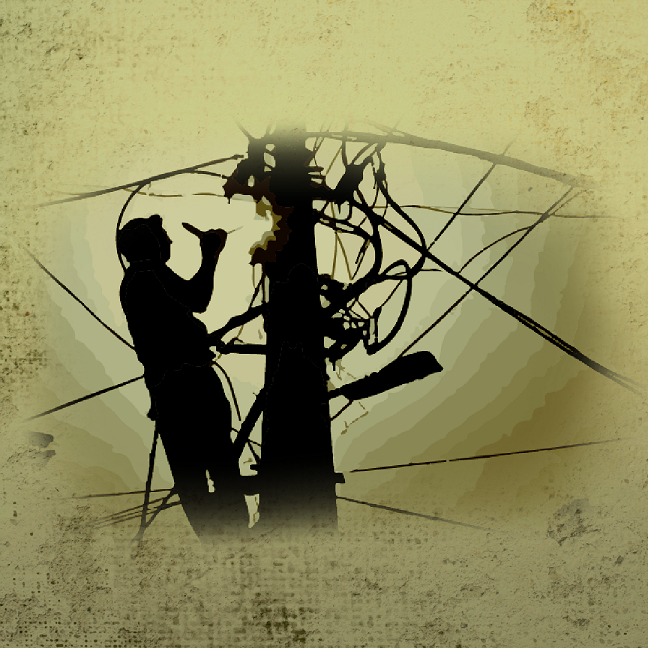
Why are consumers paying for line losses and electricity theft?
There are some complaints of non-payment of compensation in Landi Kotal. Local people anonymously admitted the successful payment of Rs80,000 compensation for the keekar trees near the houses but they say that they have not got the compensation for the land and mountain.
Incidents of theft and hurdles in Afghanistan
Incidents of theft involving parts of some towers in the Ali Masjid and Bara areas of Jamrud were reported. Following these incidents, the authorities postponed the work of laying wires on the towers, saying that the work would remain on hold until the project in Afghanistan is completed.
Before work on the CASA project stopped in August 2021, 95pc of the material and equipment required for installation of the transmission line in Afghanistan was provided but there was only 18pc of the work done.
Speaking to Lok Sujag, Hikmatullah Meyonndi, the spokesperson for the Electricity Supply Company in Afghanistan, says the work on the ongoing projects with foreign aid, including the CASA project, was stopped due to the international sanctions on the Taliban government. He claims that the installation of more than 300 transmission line towers in different parts of Afghanistan had been done. There is no obstacle to the construction work there but lack of support from financial institutions is a primary barrier.
On Feb 23, the World Bank decided to fund the revival of the CASA project in Afghanistan through a special arrangement. Under this arrangement, the interim Taliban government will have no involvement in the payments for the construction and payments to construction companies will be made outside Afghanistan.
According to the World Bank, implementation of the project continued in Pakistan, Kyrgyzstan and Tajikistan where the construction work is near completion. The construction of the CASA project in Afghanistan is expected to take three years, which would be followed by the operational phase.
Published on 10 Jul 2024




















